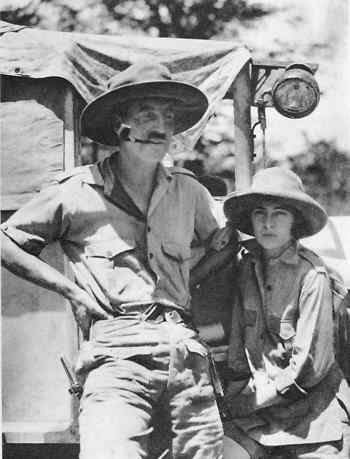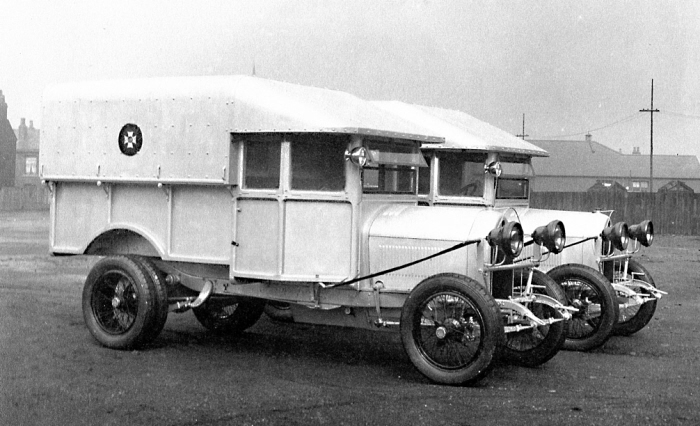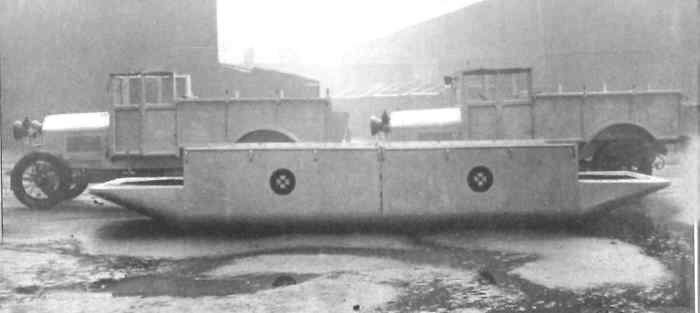
The Court Treatt expedition was the first to drive a motor vehicle from Cape Town in South Africa to Cairo in Egypt. The party of six people set off in two Crossley light trucks on 13th September 1924 and reached Cairo on 24th January 1926 sixteen months later, after covering 12,732 miles.
Chaplin Court Treatt
The expedition was the brainchild of major Chaplin Court Treatt known as C.T. He was born in Kensington, London on 3 September 1888 and grew up in Elstead Mill, Elstead, Surrey and went to Westminster School. On the outbreak of World War I he joined the infantry and went to France but in 1915 he transferred to the Royal Flying Corps flying as an observer until he was injured in a crash in 1916 in which the pilot was killed. After a period of recuperation he was sent to Egypt where he had a staff posting until the 1918 armistice.
His first peacetime job, though still as an RAF officer, was with a survey team in Africa planning and mapping for the opening of an air route from Europe to South Africa . C.T. was in charge of no 3 party responsible for the Abercorn (now Mbala, Zambia) to Cape Town section, around 2000 miles. This work was finished in 1922 but rather than return to England he stayed in South Africa where he met Srtella and they married in 1923.
He undertook several more expeditions in Africa before moving to the United States. He died
Stella Maud Court Treatt (née Hinds)
Stella
was born in Blaubank, South Africa in about 1895, and had at least one
sister, Grace and brother Errol. Her grandfather had been an
ivory hunter and
her father had accompanied him on expeditions.
She was a small women, below 5 feet 2 inches tall which is specially
notable when she is seen photographed alongside C.T. who was well over
six feet.
After Cape to Cairo they went on
further expeditions including one to Sudan which resulted in the
filming of "Stampede" in 1929 and "Stark Nature" in
1930.
The Court Treatts divorced in London in 1935.

Major and Stella Court Treatt
Errol Hinds
Errol Hinds was Stella's youngest brother born in about 1906. He accompanied the Court Treatts on further expeditions including ones to the Sudan where he was the film photographer. He later worked as photographer on several feature films including "The Clairvoyant" (1935) and "Rangle River" (1937). He made further films as both photographer and director until at least 1959 when he directed "The Wilds are Free" for the South African Government.
Thomas A. Glover
The idea of making a film record of the journey seems to have been the idea of Canadian photographer T.A. Glover who contacted C.T. with the idea. He had previously been on, and filmed, an expedition with Captain Angus Buchanan crossing the Sahara from Lagos to Algiers.
He went on to make more films, mainly documentaries and travelogues, but his credits also include the 1936 Paul Robeson film“Song of Freedom”.
Fred Law
Also from Canada, F. C. Law was a special correspondent for the Daily Express and wrote regular despatches to the newspaper throughout the expedition.
Julius
Mapata
Julius was the
son of a
Nyasaland (now Malawi) native chief who spoke
thirty-two native dialects in addition to English and had been C.T.'s
"servant" in South Africa.
The Vehicles


The Expedition
1. Preparations
© Malcolm Asquith 2009